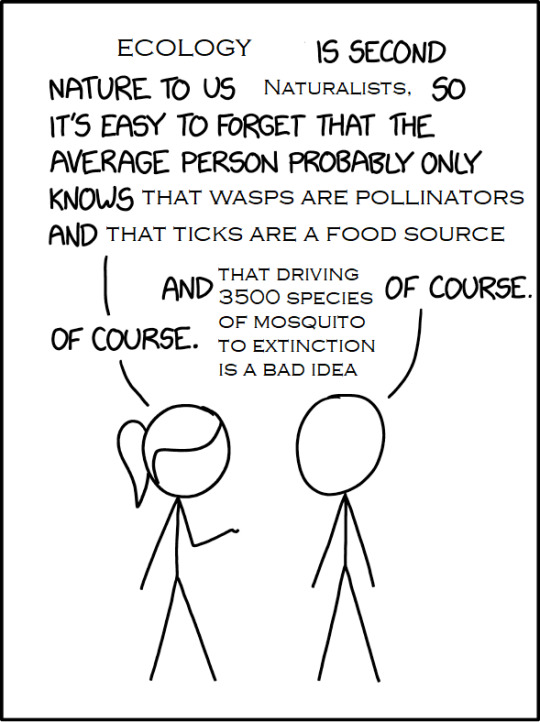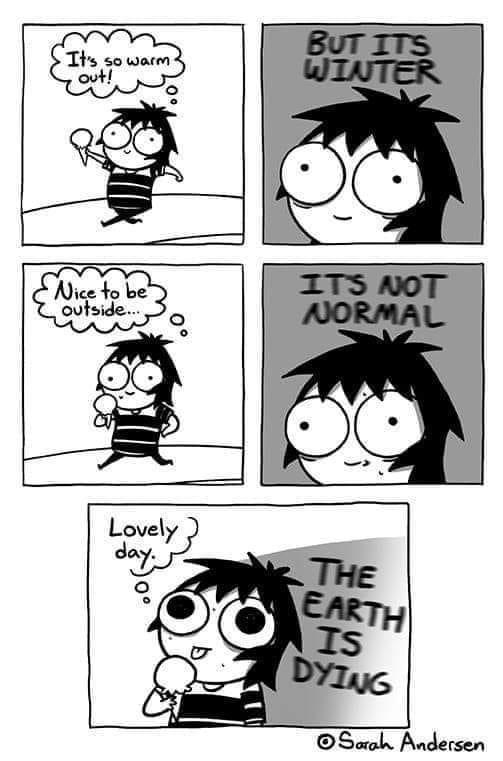Text
If you need some good news today- you should know that the sea turtle nesting data for 2023 is in and it’s really promising. In Florida, both greens and loggerheads have reached record high numbers of nests. We’re really hoping this is a success story in the making for both of these species.
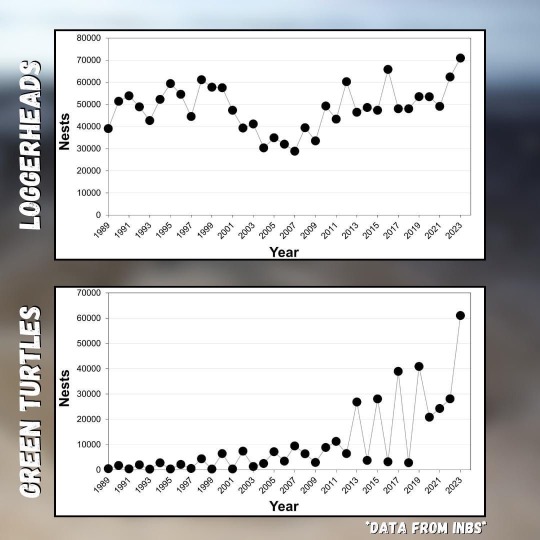
Almost half of the world’s loggerheads nest in Florida, meaning the state has a huge responsibility to conserve the species.
2K notes
·
View notes
Text
"A century of gradual reforestation across the American East and Southeast has kept the region cooler than it otherwise would have become, a new study shows.
The pioneering study of progress shows how the last 25 years of accelerated reforestation around the world might significantly pay off in the second half of the 21st century.
Using a variety of calculative methods and estimations based on satellite and temperature data from weather stations, the authors determined that forests in the eastern United States cool the land surface by 1.8 – 3.6°F annually compared to nearby grasslands and croplands, with the strongest effect seen in summer, when cooling amounts to 3.6 – 9°F.
The younger the forest, the more this cooling effect was detected, with forest trees between 20 and 40 years old offering the coolest temperatures underneath.
“The reforestation has been remarkable and we have shown this has translated into the surrounding air temperature,” Mallory Barnes, an environmental scientist at Indiana University who led the research, told The Guardian.
“Moving forward, we need to think about tree planting not just as a way to absorb carbon dioxide but also the cooling effects in adapting for climate change, to help cities be resilient against these very hot temperatures.”
The cooling of the land surface affected the air near ground level as well, with a stepwise reduction in heat linked to reductions in near-surface air temps.
“Analyses of historical land cover and air temperature trends showed that the cooling benefits of reforestation extend across the landscape,” the authors write. “Locations surrounded by reforestation were up to 1.8°F cooler than neighboring locations that did not undergo land cover change, and areas dominated by regrowing forests were associated with cooling temperature trends in much of the Eastern United States.”
By the 1930s, forest cover loss in the eastern states like the Carolinas and Mississippi had stopped, as the descendants of European settlers moved in greater and greater numbers into cities and marginal agricultural land was abandoned.
The Civilian Conservation Corps undertook large replanting efforts of forests that had been cleared, and this is believed to be what is causing the lower average temperatures observed in the study data.
However, the authors note that other causes, like more sophisticated crop irrigation and increases in airborne pollutants that block incoming sunlight, may have also contributed to the lowering of temperatures over time. They also note that tree planting might not always produce this effect, such as in the boreal zone where increases in trees are linked with increases in humidity that way raise average temperatures."
-via Good News Network, February 20, 2024
13K notes
·
View notes
Text
everyone shut up. dog named knapweed nightmare trained to sniff out invasive knapweed plants
5K notes
·
View notes
Text
One thing I've unfortunately learned from gardening, hiking and wildlife ID groups on Facebook is that the average person has no idea that "invasive" specifically means when something non-native is ecologically harmful. A whole whole lot of people think it literally just means a "pest" in any context at all, so I catch people in the USA describing our own hornworms, poison oak, even raccoons as "invasive." They just hear news stories about "invasive wildlife" and that it's damaging something and all they think is "oh, this term means when an animal or plant inconveniences me and is hard to get rid of."
I can fully see how that mental connection works and it's really not all their fault. The word does not on its own really tell you how it's meant to be used. That, and a lot of people just don't understand the difference between what matters for the ecosystem and what digs up their store bought unnatural flower cultivars.
4K notes
·
View notes
Text
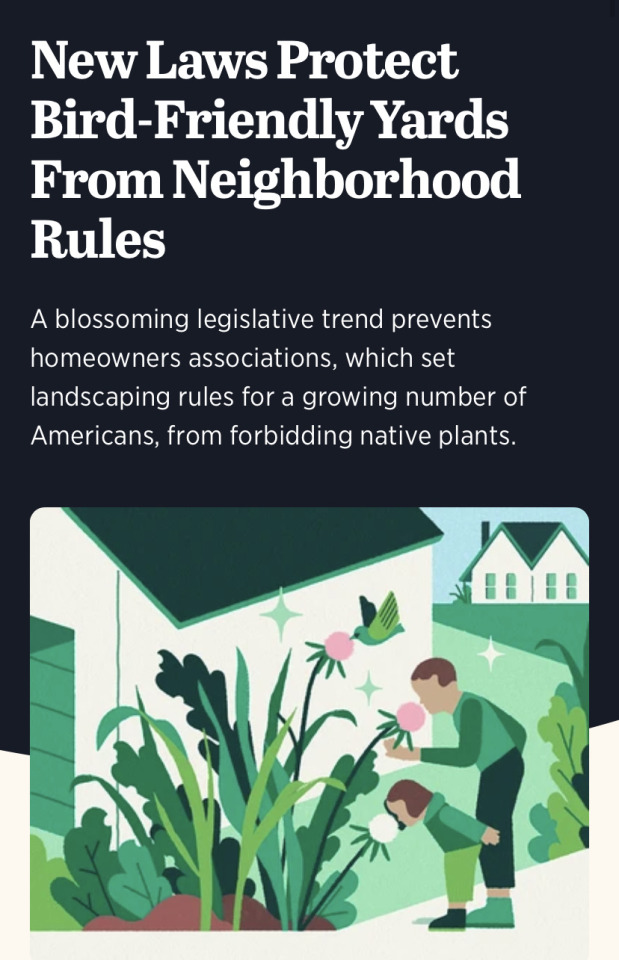
ABOUT TIME!!! for those out of the loop homeowners’ associations in the US 1. suck horrendously in every way 2. were the beginning of the end of urban biodiversity
18K notes
·
View notes
Text
Want to combat existential dread? Put a goddamn plant in some goddamn dirt.
SPECIFICALLY: a plant suited to your local area’s native ecology, and ideally one that’s considered a “keystone” species.
How does this fight existential dread?
I'm so glad you asked...
Plants are fuckin pretty: Bring some motherfucking beauty into your life.
Look at it: you are nurturing life! You are like unto a god. Or at least some sort of parental figure. Whatever: live your best “I may not always be able to get out of bed for myself, but the kids are counting on me, damn it” coping strategy life.
But, like, low-stakes life, so if you fail it’s nbd: We’ve all been there, buddy. But a plant is even lower stakes than a fish, so even if you kill a few as you figure things out, the impact of any single failure is in the basement. And remember: the only difference between the number of plants a novice gardner kills versus the number a master gardener kills is that the master gardener will FUCKING BRAG ABOUT THEIR BODYCOUNT.
Gardening ticks a lot of common “how to fight depression” boxes: Probably, you will be moving your physical form about, and have some sort of schedule (watering, harvesting, admiring, whatever), and be getting outside where things like the sun can lightly damage you in a healing way, and you’ll be able to see physical results/rewards from your efforts. If you get out among actual trees, they’ll probably even shove some antidepressant-acting molecules up your nose holes (i.e., forest bathing; it’s a whole legit thing with science backing it up, but I’m too cynical and jaded to take the name seriously, I’m so sorry).
With EXTREMELY little effort, you can improve your hyperlocal environment in a visible way: Are you an 80s kid who hyperfixated on the Chernobyl disaster? Or a 90s kid radicalized by objectively terribly animated cartoons like Captain Planet and Ferngully? An 00s kid who had their mind blown by the BBC series Planet Earth and/or cried about WALL-E’s fuckin boot plant? ARE YOU A ONCELER KINNY WHO WANTS TO IMPRESS THE FUCKIN LORAX? Well, plant the right plant in the right spot and you’ll have made a small but material fuckin difference in your actual, physical environment.
Plants support & attract other fun creetchers to look at: OK, if you’re not excited by plants on their own merits, probably there’s something else in nature that you like; what is it? Birds? Snakes & lizards? A frog? Squirrels or deer or some other fluffy fucker? Motherfuckin bees and butterflies? WORMS? What’s your creetcher category of choice? Whatever it is, you probably have a buck-wild amazing representative of that category that lives in your IMMEDIATE area. Look them up and pick one; this is now your mascot, your child, your blorbo, your “just a little guy.” Want to see more of them? Or just Provide For Them? Well, local plants play a role in at LEAST their food, shelter, and reproductive needs—we’ll come back to this.
"All the magic of creation exists within a single, tiny seed." - Magi Lune, FernGully
All right, let's get into specifics under the cut...
OK but why does the kind of plant matter?
Right, so, a few reasons:
We Do Not Plant Invasive Species If We Can Help It: All plants are Good Boys by their nature, but for the same reason we don’t put an aggressively tempered working dog into a studio apartment filled with breakable things, we don’t put fuckin Golden Bamboo into a Northeastern United States garden. No, not even in a pot. It will escape. A plant is considered invasive if it outcompetes native/local vegetation to the point of displacing it, which creates food & habitat gaps in the local environment, in no small part because invasives tend to create monocultures, which are Not Good for a healthy environment.
Non-native species are harder to keep alive: Like. So much harder. A plant not suited to your local environment needs so much goddamn pampering. “Oh no! It’s too hot/cold! My soil is too acidic/not acidic enough! I need more/fewer nutrients! This watering schedule is desiccating/drowning me! Why is the air so humid/dry?????” Jesus. Christ. Let’s get back to our dog metaphor: Pick the right breed for the right lifestyle. If you live somewhere cold, it does not make sense to adopt a breed adapted for the heat. If you live in a tiny space, it does not make sense to adopt a “big” breed. If you aren’t super active or outdoorsy, it doesn’t make sense to adopt a high-energy breed that needs to run.
Native creetchers need native plants: Remember your new local creetcher child you picked out? WELL. Fun fact: local creetchers like local plants best when it comes to deciding where to live. This is because, broadly speaking, most creetchers aren’t generalists (i.e., they can’t eat or build their home in just anything); they’re specialists. Meaning, they’ve coevolved with the local flora and fauna as part of a broader, intricate ecosystem that operates on complex checks and balances to sustain ecological homeostasis. OK, less technical: a lot of creetchers only eat, breed, and live in or on VERY specific plants. Extreme examples are things like monarch butterflies, which only lay their eggs on specific species of milkweed in North America, or koalas, which pretty much only eat eucalyptus leaves. But probably, there are half a dozen bugs, birds, reptiles, or whatever in your local area who depend on (or at least vastly prefer) plants from your local area as their direct/indirect food source or for their nesting/shelter site.
Bonus round: consider a keystone plant species: A keystone species is a plant or creetchur whose presence or absence in a particular ecosystem massively influences the health and success of that ecosystem. Oak trees as a genus are considered keystone plants because they foster an incredible diversity and density of life across bugs, birds, and small mammals all within their form. Keystones hold up the arches that keep ecological pathways stable and predictable, which makes them extra valuable in terms of “if you can only plant one (1) thing, plant THIS” decision making. There are also plants that might not rise to the level of “keystone” but which support a greater diversity of fauna than most others. You can look this up by searching “keystone plants of [state/country/ecoregion].”
Bonus round: support your local endemic and/or endangered species: Plants native to your local area probably get overlooked by the plant nursery & landscaping trades because of colonialism they don't fit the "old reliable" standards of "acceptable" suburban landscape design, and so any plants that ONLY grow in your area (i.e., are endemic to that particular ecological niche) or are otherwise endangered can use all the love and support they can get. And this one is difficult, which is why it’s a bonus. Most locally endemic and/or endangered plants aren’t easy to come by and/or to get established. They require extra effort! These are your special needs puppers at the shelter; please consider giving them a loving home, but only if you’re prepared to put in the extra effort required. <3
OK, that all sounds great, but what you don’t seem to realize is that I [don’t have a yard / don’t have disposable income / am not able-bodied enough to garden / have zero practical experience with plants]
Fair enough, my friend. I hear you. But, there are many ways to go about getting a plant into some dirt, at multiple levels of complexity. Consider these options:
Find a local native plant enthusiast organization and get involved at whatever level you’re comfortable with: Most organizations formed to celebrate native flora operate largely on volunteer effort and will have various opportunities for different age/ability/skill levels. They’re also full of incredible nerds who know a lot about literally everything; this is PLANT FANDOM, y’all, and you will find lifetime friends and mentors (and occasional gatekeepy know-it-alls but whatever we live in a society etc.). Some of these orgs require official membership or fees to join, but those that do usually have participation opportunities for non-members. Maybe you’ll plant plants, or maybe you’ll help collect and process wild native seed, propagate native plants for small-scale trade and sale, organize educational events, produce literature and/or digital media to support the org and spread awareness, scout for community garden spaces the org can work in, keep tabs on local construction in wild spaces to organize native plant “rescues,” participate in citizen science projects like bioblitzes or bird counts to document local ecology, or help with organization administration!
Or, find your local government’s natural resources department and get involved: Even if your local government writ large is hot garbage on environmental issues, probably there are some smaller departments full of Exhausted Optimists who are already bought in on the value of native flora & fauna and ecological preservation/restoration/conservation. And these folks are usually hungry for free help and will often have volunteer opportunities requiring little-to-no prior skill to improve, restore, or maintain public lands and nature preserves, or to help with citizen science projects that are backed by governmental grants. Search their sites using keywords like “conservation,” “habitat restoration,” “endangered/threatened species” and see what’s available (you might have to dig; these sites are always labyrinthian, and typically because responsibilities are fractured between multiple sub-departments).
Utilize any porch or patio space you have and plant in pots: Native plants can go in pots! And even just a couple of plants provide habitat/food/nursery space for buggies.
Ask friends or family who do have a yard/land if you can go ham in their space: Go full Mary Lennox within your (relatively) wealthier extended support system and ask, “Might I have a bit of earth?” like the precocious darling you are, and build your Secret Garden (healing generational trauma optional).
Look for any existing community gardens you can contribute to: Typically and traditionally, community gardens are organized around growing edible plants for harvest, but most of these will still want at least some flowering plants to attract pollinators for their fruits and veggies. However, you can also find community gardens built to showcase local flora, to support local pollinators, to provide habitat for special or endangered creetchers, or even just to provide beauty in the surrounding community. These programs will likely also have opportunities to find mentors or at least swap info with other, more-experienced gardeners.
See if your apartment/condo/school/office park will let you plant in their landscape areas: Success here will depend on whether the building complex is managed locally or via an off-site corporation, and what the existing contracts with landscaping companies paid to manage the green spaces look like. However, you can sometimes sweet talk management or admin into letting you take over a couple of beds (especially if it’s pitched as a “community garden”). Alternatively, you can go full powerpoint and see if you can convince the property manager to invest in landscaping with native plants. Probably, you can model your research/presentation off of existing proposals other eco-minded orgs in your area have used and published online; look around!
Fuuuuuck, fine. How do I find out more so I can get started?
Look for a local native plant or creetcher enthusiast organization: Save yourself the headache of figuring out where to start by just finding an existing community who’s going to have information and resources tailored to your area that you can leverage, lol. Literally put something like “native plant organization [your city/state/province/country]” into a search bar and see what you get (try “wildflower” too), or something like “naturalist groups [your city/state/province/country]” if you want to start from the creetchur level and work backward down to plants. The more specific/local the organization is to you, the better. Organizations like these are usually one-stop shops for research materials, links to local resources, seed and seedling swaps (for flora groups), creetcher watching events, mentorship & community support, and volunteer opportunities.
Dig into your local government’s natural resources, agricultural, or environmental department’s websites: Pretty much all governments have agricultural offices charged with providing information and support to farmers at a variety of scale, including tips and resources on how to garden in various regions, with even basic information aimed at hobbyists. But most will also have natural resources and environmental departments that will have resources on creating and managing habitat for native flora & fauna as part of conservation and environmental stewardship programs. There’s a wealth of dry as fuck but incredibly useful information out there that your taxes have already paid for; use it!
Determine what Level III Ecoregion you live in: A lot of native plant and creetcher research and plant databases use ecoregion names to help with categorization and/or organization of information. You want to know the level III ecoregion in particular, because it’s like the “just right” ecosystem size level for our purposes here. Search “level 3 ecoregions of [your country/state/province]” and you’ll probably be able to find a pretty map with the regions drawn out for you to pinpoint where you live and get the appropriate name. If you find your local government's agricultural or environmental office, they’ll probably have high-quality map image downloads and/or entire webpages with detailed info.
Search your local library system for books about plants and creetchers native to your area: There are SO many plant nerds out there, y’all, and they’ve written amazing books about their hyperfixation: field guides, regional tours, landscape & garden design, photography porn… This is where knowing your level III ecoregion name really comes in handy, because a lot of the really juicy books by the most interesting nerds are probably going to name drop the ecoregion in the title or subtitle. Bonus points if the publisher is part of a college/university or governmental department—SO nerdy, and so choice. I also like books because they usually have a lot of extra fun/weird info in them about how best to support specific plants and creetchers that doesn’t always end up in online databases. Also, the photographs and/or hand-drawn botanical illustrations are charming. AND, you can sometimes find amazingly specific books like “native plants for attracting [your blorbo creetcher]”!
Find and search online native plant or wildflower databases: This is the quickest and most efficient way to look up plants, especially if you want to narrow your search beyond just ecoregion by additional growing parameters like sunlight and water requirements, whether the plant has food/medicinal/production properties, bloom season and color, whether the plant is considered a good pollinator, and sometimes insane but useful shit like “are the goddamn deer going to eat it?” If you’re going to build a personal spreadsheet/wishlist of plants to look for, copy-pasting from a database search is a great start. However, be aware that these databases will have incomplete or slightly incorrect information for how a particular plant grows or performs in your specific area (i.e., there are plenty of “native” plants that have a broad range spanning multiple ecoregions, but they might look/act/need differently in one region per another, and it’s a crapshoot what info has been entered into the database).
Snoop around on social media sites like Reddit, YouTube, Facebook Groups, etc.: There is a LOT of information within informal online communities. Armed with some basic info like your ecoregion, a specific plant or creetcher name, and whatever specific question you need answered, you can find hyper-specific information pretty quick. Most government departments and native plant/naturalist organizations will have presences on one or more of these sites that you can follow as well.
Get comfortable using scientific names for plants and creetchers: Knowing the common name for a plant or creetcher is fine until you're trying to research it or find where you can get your hands on the right seeds/seedlings, and then you realize there are like a bajillion different plants known colloquially as a "buttercup" and they're all wildly different species. Scientific names are a plant or creetcher's genus & species designation (plus sometimes subspecies), will be vaguely latin or Greek looking, written in italics, and always have the genus name capitalized but the species name not (even when the species name is a proper noun). So like Ranunculus bulbosus is the scientific name of the bulbous buttercup native to Western Europe, and Oenothera speciosa is the scientific name of the colloquially called "buttercup" of the central United States (but more commonly known as pink evening primrose, or showy evening primrose, or pinkladies, or... you get the idea). Look for the scientific name first and foremost to make sure you end up with the plant you really mean.
If you made it this far, you’re a champ. Hopefully you are inspired to put a goddamn plant in some goddamn earth and beat back that existential despair like a PRO.
I might make another post with specific resources/links for the United States, since that's what I'm most familiar with, and link it to this post. If people have good resource tips for other countries, I can collate those to add as well! :3
240 notes
·
View notes
Text
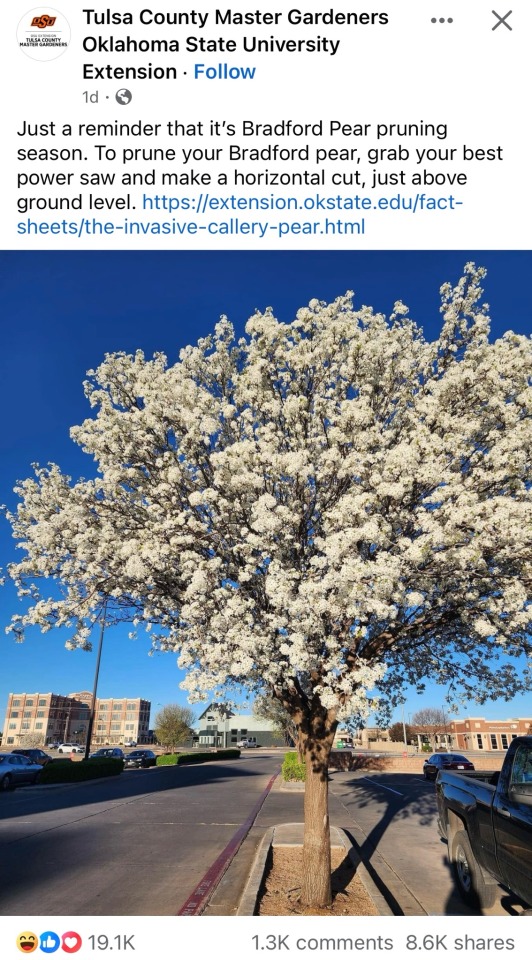
Nobody throws shade like a biologist with burning hatred for invasive plants
#and probably treat the stump while you’re at it or else you’ll have a whole thicket of suckers#ask me how I know
38K notes
·
View notes
Text
The (Real) Stardew Valley Farm Update
Okay, so I meant to post way more about this, but the past year involved a truly inhumane number of medical appointments including driving an hour away 2-3 times a week all summer, so . . . not a lot of time for gardening and not much energy for posting. Fingers crossed that this year goes better!
To refresh, I'm trying to grow everything from Stardew Valley in our yard, with substitutions as needed, preferably with Midwest USA native plants. 2021 and 2022 can be found here, with my original plans for what I was going to do for 2023 and 2024.
2021: Additions/Corrections
Starfruit - Native wood sorrel (thanks to @alienskyler1 for teaching me that they were related!)
Cave Carrot - Queen Ann’s Lace, AKA wild carrot (also plenty of cultivated carrots)
2023: What Actually Happened
Garlic - Native wild garlic
Blueberries
Wild Horseradish - Not wild, contained in a raised bed on concrete because I don't want it to get too wild (also a mint containment system!)
Hops - Teamaker hops which is good for tea. It struggled in the summer so maybe tea this year?
Winter Root - I went with hopniss, aka groundnuts, a native vine with tubers you dig up in winter
Fiddlehead Fern - Native hayscented fern
Poppy - Native wood poppy
The ferns and poppies were planted in the fall, so hopefully they come up well this spring!
2024: The Plan
Blue Jazz - Native Ozark Bluestar (one of my winter sowing seeds)
Apricot Tree - Native passionflower vine, known as wild apricot (winter sowing)
Sunflower - Winter sowing two native sunflowers, and will hopefully be growing some massive non-native ones as well
Summer Spangle - Native prairie lily (winter sowing)
Palm Tree/Coconut - Native palm sedge. I'll grow this from seed once it warms up
Pineapple - White strawberries (pineberries)
Pumpkin
Melon
Oak Tree - Native dwarf chinquapin oak (it's been shockingly hard to get my hands on one)
Sweet Pea
Hot Pepper
Parsnip
Corn
Ancient Fruit - Native Aronia (they're blueish and have lots of antioxidants so you live to be ancient)
We'll see how it goes!
Planned for 2025 and Beyond:
Potato
Red Cabbage
Artichoke - Native Jerusalem artichokes
Cactus Fruit - Native prickly pear cactus
Yam
Bok Choy
Leek
Blackberry
Holly - Native winterberry holly
Crystal Fruit - Honey berries, which produce fruit earlier than anything else
Mushrooms - I'm just gonna ignore varieties and try some plugs or similar
???????
Still trying to figure out doable substitutes for these
Rice
Wheat
Qi Fruit - Very creepy
Taro Root - I would have to plant it in pots
Snow Yam
Mahogany Tree
Peach Tree
Pomegranate Tree - I could try Russian pomegranates?
I'll try to do a better job this year keeping everyone updated. It's been such a fun project and I'm so glad I decided to go for it!
#the (real) stardew valley farm#the habitat ring#gardening#don’t be a petaq grow native plants#stardew valley#sdv#I make bad decisions but at least the wildlife love me
10 notes
·
View notes
Text

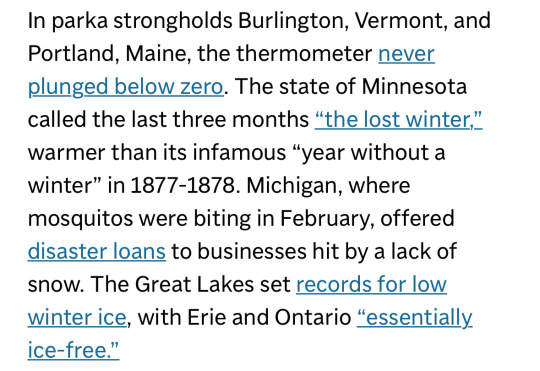
Source
Begging everyone to stop asking this rhetorical question and, instead, demand our elected officials do something about it
11K notes
·
View notes
Text
Me: I read about this rare plant/animal/insect that's important for the local ecosystem and about to go extinct. It looks cool as fuck. Let's find out how to get it in my garden.
Google: oh yeah, those things are a pest. They'll ruin your beautifully manicured lawn. Here's to get rid of it. Why not buy some roundup while you're at it.
Me: >:(
103 notes
·
View notes
Text
VERY IMPORTANT a dam in the Netherlands, the weerdsluis lock, is directly on a migratory path for spawning fish. They have a worker stationed there to open the door for the fish, but they can take a while to open it. So to keep the fish from getting preyed on by birds they installed a doorbell. Only, the fish don't have hands to ring the doorbell. If you go to their website, they have a LIVE CAMERA AND A DOORBELL that YOU RING FOR THE FISH when they're waiting, and then the dam worker opens the door for them! I can't express how obsessed I am with this. look at this shit. oh my god.

Please check on the fish doorbell once in a while :)
61K notes
·
View notes
Text
Absolutely terrified for the new Stardew update and what it’s gonna mean for The (Real) Stardew Valley Farm project 😬
#please don’t add more plants I’m begging you#stardew valley#gardening#the (real) stardew valley farm#the habitat ring
18 notes
·
View notes
Text
something my mum always taught us was to look for the resources we're entitled to, and use them. public land? know your access rights and responsibilities, go there and exercise them. libraries? go there and talk to librarians and read community notice boards, find out what other people are doing around you, ask questions, use the printers. public records offices? go in there, learn what they hold and what you can access, look at old maps, get your full birth certificate copied, check out the census from your neighbourhood a hundred years ago. are you entitled to social support? find out, take it, use it. does the local art college have facilities open to the public? go in, look around, check out their exhibit on ancient looms or whatever, shop in their campus art supply store. it applies online too, there is so much shit in the world that belongs to the public commons that you can access and use if you just take a minute to wonder what might exist!!!
14K notes
·
View notes

